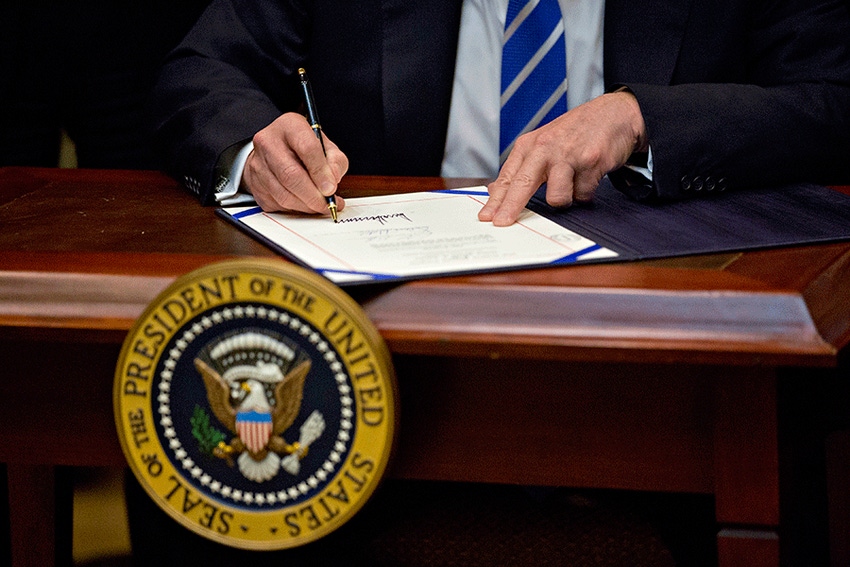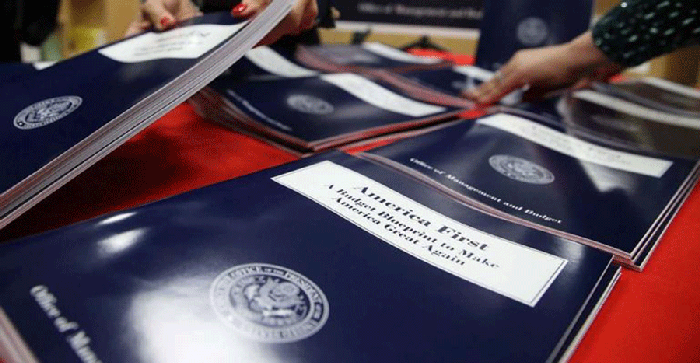
While the president was solving the problems of the Mideast and mending fences with the pope, the legislative poop hit the proverbial fan when the Office of Management and Budget made public the administration’s final budget proposal that would drastically slash federal agriculture programs over 10 years.
When the preliminary budget proposal came out a few weeks ago, ripping farm programs a whopping 21 percent, ag organizations couched their concerns in somewhat diplomatic language. But when they got a look at the proposed final budget, the gloves came off and the e-mails started flying.
Typical was this statement by Food Policy Action: “…the budget the president released is filled with misplaced priorities that would be terrible for America’s food system, our people, and our nation. Families, seniors, and farmers, who are already struggling, would find it harder to put food on the table and make ends meet.”
It goes on: “This budget is also a bad deal for rural America, by eliminating conservation and rural development programs that protect our precious lands, waterways, and watersheds, and promote economic growth in rural America. We call on Congress to reject this proposal and stop this radical agenda in its tracks.”
The National Association of Conservation Districts decried the “reckless cuts to every part of USDA and many other federal programs that support voluntary conservation.”
Noting that only two months ago the president was praising U.S. farmers and ranchers in a special National Ag Day proclamation, encouraging all Americans to recognize "the preeminent role that agriculture plays" in our daily lives and the national economy, and expressing "deep appreciation for the folks who feed and clothe us," Farm Policy Facts, in a news release titled “The Short Straw for Farmers Once Again,” said, “It is now clear that these words of deep appreciation were … a foil for deep cuts to farm policy. It adds insult to injury, as the old saying goes. Farmers aren't looking for praise — they're looking for a fair shake. Sadly, in the first round of the Washington budget game, they have come up short on both."
Crop insurance, which has become the underlying component of what’s left of the farm safety net and is now the biggest federal farm support expenditure, would be cut 36 percent over the next 10 years. Federal subsidies for farm insurance, now averaging about 62 cents per $1 of premiums, would be capped at $40,000 per year, and anyone with adjusted gross income over $500,000 would get no insurance subsidy.

"The budget the president released is filled with misplaced priorities that would be terrible for America’s food system, our people, and our nation."—Food Policy Action statement
The president signed an executive order in April that was purported to promote agriculture and rural prosperity. Since taking office, he has continued his push to dismantle NAFTA, which has been a boon to U.S. farm exports; shot down the potentially export-generating TransPacific Partnership trade agreement; left farmers who depend on immigrant labor to plant, tend, and harvest their crops wondering if an already scarce labor force will be diminished even more; and now wants to eviscerate what’s left of federal farm programs, not to mention hamstringing vital agricultural research programs and dismantling or sharply cutting international food aid programs that provide additional markets for U.S. commodities.
The administration says its plan will result in a balanced federal budget within 10 years. This at the same time it is calling for massive tax cuts for businesses and wealthy individuals — cuts based on achieving sustained economic growth more than double the level of recent years, something many respected economists say is highly unlikely.
Steep cuts in Medicaid and food aid programs would lighten the federal budget, but the impact would be particularly onerous for many states, particularly southern ones that have disproportionate numbers of citizens who are poor or have chronic medical conditions. Many of those states are already coping with major budget shortfalls due to declining revenues, and they would be faced with making deep cuts to programs for the poor/chronically ill, with prospects of creating a large population of extreme poverty.
The budget is, of course, subject to extensive changes as Congress starts cutting and pasting and constituents and organizations jockey to try and preserve as much funding as possible. But an increasingly urban Congress is not exactly overrun with friends of agriculture, and ag organizations don’t have the clout on Capitol Hill that they once did.
The budget proposal emphasizes anew the irony that those who would be hurt most — farmers, the poor, the sick — are those who overwhelmingly helped put the president in office.
With “friends” like this…
About the Author(s)
You May Also Like




